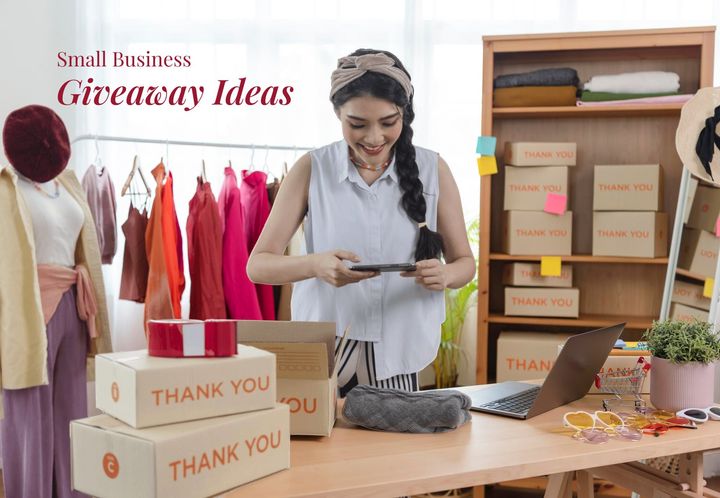Is It Legally Okay to Utilize User-Generated Content For Brand Marketing
This article will explore the legal considerations and best practices for brands looking to harness the power of UGC, ensuring they can do so responsibly and effectively.

User-generated content (UGC) has become an important part of modern marketing strategies. UGC includes a variety of content types, such as reviews, social media posts, videos, and photos, created and shared by consumers rather than brands. This content is often more authentic and trustworthy than traditional advertising, leading to higher engagement and stronger customer relationships.
However, as enticing as UGC is for marketers, it’s important to know the legality surrounding its use. Understanding the legalities of using UGC is essential to avoid potential pitfalls, such as copyright infringement and negative publicity.
This article will explore the legal considerations and best practices for brands looking to harness the power of UGC, ensuring they can do so responsibly and effectively.
What is User-Generated Content (UGC)?
User-generated content (UGC) refers to any form of content—such as social media posts, reviews, photos, and videos—created and shared by consumers rather than the brands themselves. This type of content is typically produced by individuals who are not paid professionals but rather regular users who are sharing their genuine experiences and opinions about a product, service, or brand. UGC can be found across various platforms, including social media networks (like Instagram, Facebook, and Twitter) and video-sharing sites (like YouTube and TikTok).
Brands are increasingly turning to UGC as a powerful marketing tool due to its inherent authenticity and ability to engage audiences in a meaningful way. The reason is not far-fetched. First, consumers trust content created by their peers more than traditional advertising. UGC provides real-life testimonials and genuine experiences, which can significantly influence purchasing decisions.
Also, UGC tends to generate higher engagement rates than branded content. People are more likely to like, comment on, and share posts created by fellow consumers, fostering a sense of community and connection.
See Also: Why is User-Generated Content (UGC) Crucial for Your E-commerce Business in 2024
Legal Considerations for Using UGC
When it comes to user-generated content (UGC), copyright law plays a crucial role. Copyright is a legal right that grants the creator of an original work exclusive rights to its use and distribution. This means that the individual who creates the content (whether it's a photo, video, blog post, or social media update) typically holds the copyright to that content. This ownership entitles them to control how their work is used, reproduced, and distributed.
For brands looking to use UGC in their marketing campaigns, it's essential to obtain permission from the content creator. Using someone else's content without permission can lead to copyright infringement, which can result in legal actions including fines or lawsuits. Permission can be obtained in various ways; asking the creator directly for permission to use their content or drafting formal agreements where the content creator grants specific rights to the brand to use their content under agreed terms.
In summary, while UGC offers tremendous value for brand marketing, it's essential to navigate the legal landscape carefully. Understanding and respecting copyright laws, platform terms of service, and the limitations of fair use are critical steps in leveraging UGC responsibly and effectively.
Obtaining UGC Legally Through Giveaways/Contest Entries
One effective method to encourage the creation and legal use of UGC is through giveaway/contest entry forms. Platforms like Giveaway.com excel in this area, providing a structured and appealing way for brands to obtain valuable content from their users.
To legally obtain UGC through giveaways, brands must establish clear and comprehensive terms and conditions. These terms should explicitly state that by participating in the giveaway, users grant the brand the right to use their content for marketing purposes. Specify that users grant the brand a non-exclusive, royalty-free, worldwide license to use, modify, and distribute their content. Clarify how long the brand can use the content. Detail the ways in which the content may be used (e.g., social media posts, advertisements, website features).
Transparency is key. Brands should communicate clearly with participants about how their content will be used. This can be done through announcements and follow-up materials. Keep thorough records of all consents obtained. This includes saving copies of the terms and conditions, records of participants' agreements, and any communications regarding the giveaway. This documentation can serve as proof of consent if any legal issues arise.
Ensure that any personal data collected during the giveaway is handled in compliance with privacy laws and regulations, such as the General Data Protection Regulation (GDPR) in Europe or the California Consumer Privacy Act (CCPA) in the United States. Even with legal rights to use UGC, it's good practice to give credit to the original creators whenever possible. This not only respects the creator’s work but also fosters goodwill and encourages more users to participate in future giveaways.
Organizing Legal Giveaways with Giveaway.com
Giveaway.com is a platform designed to help brands and businesses host engaging and effective giveaways. It provides a comprehensive solution for organizing, managing, and promoting contests that encourage user participation and generate valuable user-generated content (UGC). The platform is user-friendly and versatile, catering to a wide range of industries and campaign objectives.
Giveaway.com offers a variety of customizable templates that allow brands to create visually appealing and engaging contests. These templates are easy to use and can be tailored to match the brand's aesthetic and specific campaign goals. Giveaway.com integrates with major social media networks, enabling brands to run giveaways across multiple platforms, such as Instagram, Facebook, Twitter, and YouTube.
Giveaway.com is designed to work with popular social media platforms, allowing brands to maximize their reach and engagement, while automating the entry collection process, making it easy to manage and track participants' entries accurately. All in all, giveaway.com simplifies the process of collecting UGC by providing several tools and features for you to customize your giveaway contest.
Conclusion
In conclusion, while UGC presents exciting opportunities for brands, it's essential to approach its use with care, transparency, and respect for the rights of content creators. By adhering to copyright laws, respecting platform terms of service, and obtaining explicit consent from content creators, brands can ensure that their use of UGC is legal, respectful, and beneficial for all parties involved.
Platforms like Giveaway.com play a vital role in facilitating the collection of UGC through structured and compliant giveaways. Don’t wait! Collect UGC legally through Giveaway.com




